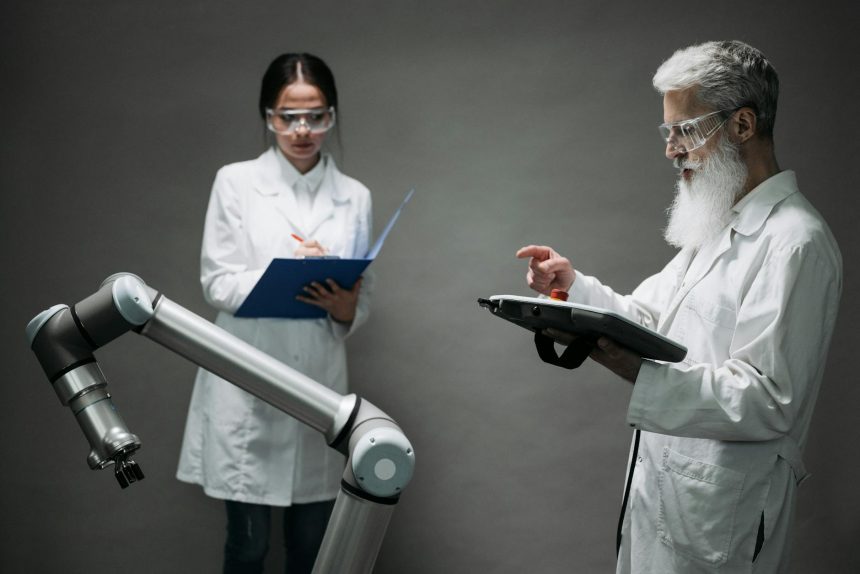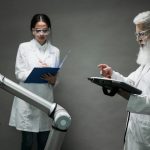Automated AI Bone Quantification: Revolutionizing Dental Diagnostics?
In the rapidly evolving landscape of dentistry, precision and efficiency are paramount. Traditional methods for assessing alveolar bone levels, while foundational, often present challenges that can impact diagnostic speed and consistency. But what if an innovative solution could offer unparalleled accuracy and streamline this critical process? This article delves into how Automated AI Bone Quantification is poised to redefine dental diagnostics, offering a glimpse into a future where advanced technology empowers dental professionals like never before.
Understanding Alveolar Bone Levels: Why It Matters So Much
Alveolar bone, the specialized bone that holds teeth in place, is a cornerstone of oral health. Its integrity is vital for maintaining tooth stability, supporting dental prosthetics, and overall periodontal health. Changes in alveolar bone levels, often indicative of bone loss, can be a red flag for conditions like periodontal disease, trauma, or systemic illnesses. Accurate assessment is crucial for early detection, treatment planning, and monitoring disease progression.
Traditional Methods: Challenges and Limitations
Historically, dental professionals have relied on conventional radiographic techniques, such as periapical radiographs and panoramic X-rays, to evaluate alveolar bone. While these methods provide valuable two-dimensional insights, they come with inherent limitations. Subjectivity in interpretation, potential for projection errors, and the inability to precisely quantify bone volume in three dimensions can sometimes lead to variability in diagnosis and treatment planning. Cone-beam computed tomography (CBCT) has significantly advanced imaging capabilities, offering 3D views, but manual analysis of these complex scans remains time-consuming and labor-intensive.
The Rise of Automated AI Bone Quantification
Enter the era of artificial intelligence. The development of an Automated AI Bone Quantification model represents a monumental leap forward in dental imaging analysis. By leveraging advanced algorithms and machine learning, these models can process vast amounts of imaging data with remarkable speed and accuracy, automating tasks that once required extensive manual effort. This not only enhances diagnostic capabilities but also ushers in an unprecedented level of objectivity and consistency.
How AI Models Work in Dental Imaging
At its core, an AI model for bone quantification is trained on a massive dataset of dental images, often CBCT scans, where alveolar bone levels have been meticulously annotated by human experts. Through this training, the AI learns to identify patterns, structures, and subtle changes indicative of bone height and density. When presented with a new scan, the model can then autonomously segment and quantify the alveolar bone, providing precise measurements and even detecting early signs of bone loss that might be missed by the human eye. This process often involves deep learning techniques, allowing the AI to continuously refine its understanding and improve its performance.
Key Benefits of Automated Alveolar Bone Measurement
The integration of AI into alveolar bone assessment brings a host of advantages for both practitioners and patients:
- Enhanced Accuracy: AI models can provide highly precise and consistent measurements, reducing inter-observer variability.
- Increased Efficiency: Automation significantly cuts down the time required for image analysis, freeing up valuable chairside time.
- Early Detection: The ability to detect subtle bone changes can lead to earlier diagnosis and intervention for conditions like periodontal disease.
- Improved Treatment Planning: More accurate data supports better-informed decisions for implants, orthodontics, and restorative procedures.
- Objective Data: AI offers quantifiable, objective data, which can be invaluable for monitoring disease progression and treatment outcomes.
Validating AI for Clinical Accuracy: What You Need to Know
While the promise of AI is immense, its clinical adoption hinges on rigorous validation. For an Automated AI Bone Quantification model to be trusted, it must demonstrate consistent accuracy and reliability against established gold standards. This validation process is critical to ensure that the technology performs as expected in diverse clinical scenarios and across various patient populations.
Development and Validation Process Explained
The journey from concept to clinical tool involves several crucial steps. Initially, models are developed using large, diverse datasets. This is followed by internal validation, where the model’s performance is tested on data it hasn’t seen before but is from the same source. External validation is even more critical, involving independent datasets from different institutions to ensure generalizability. Statistical metrics, such as sensitivity, specificity, and agreement with expert human assessments, are rigorously evaluated. Only after robust validation can an AI model be considered ready for clinical application.
For more insights into the validation of AI in medical imaging, you can refer to resources like the National Library of Medicine’s articles on AI in healthcare.
Real-World Impact: Enhancing Patient Care
The practical implications of precise Automated AI Bone Quantification are profound. Imagine a scenario where a patient’s initial consultation includes an immediate, highly detailed report on their alveolar bone health, generated by AI. This empowers dentists to discuss potential risks and treatment options with greater clarity and confidence. It also allows for personalized treatment plans that are finely tuned to the patient’s specific anatomical needs, leading to more predictable and successful outcomes. This level of personalized care significantly elevates the patient experience and fosters greater trust in dental professionals.
Future Trends in Dental AI and Bone Analysis
The current advancements are just the beginning. The future of dental AI promises even more sophisticated tools that can integrate various data points—from genetic markers to lifestyle factors—to provide a holistic view of oral health. We can anticipate AI models that not only quantify bone but also predict future bone changes, assess bone quality, and even assist in surgical planning with unprecedented accuracy. The continuous evolution of deep learning algorithms will further refine these capabilities, pushing the boundaries of what’s possible in diagnostic imaging.
Integrating AI into Everyday Practice
The seamless integration of AI into existing dental practice workflows is key to its widespread adoption. Software solutions are being developed to be user-friendly, allowing dentists to upload CBCT scans and receive AI-generated reports effortlessly. This means that embracing AI doesn’t necessarily require a complete overhaul of current procedures but rather an enhancement of existing diagnostic capabilities. Training and support will be crucial to help dental teams confidently utilize these powerful new tools.
Overcoming Implementation Challenges
While the benefits are clear, implementing new technology always comes with challenges. These can include initial investment costs, the need for staff training, and ensuring data privacy and security. However, as AI technology becomes more mature and accessible, these barriers are expected to diminish. Furthermore, regulatory bodies are actively working to establish guidelines for AI in healthcare, which will build greater confidence in its use. For more on digital dentistry trends, explore resources from the American Dental Association.
The journey towards fully embracing Automated AI Bone Quantification is well underway. This technology is not merely an incremental improvement; it represents a paradigm shift in how we understand and manage alveolar bone health. By offering unparalleled precision, efficiency, and objectivity, AI models are set to empower dental professionals with superior diagnostic capabilities, ultimately leading to enhanced patient care and healthier smiles.
Ready to explore how these advancements can benefit your practice? Share your thoughts or questions in the comments below!
Featured image provided by Pexels — photo by Pavel Danilyuk








